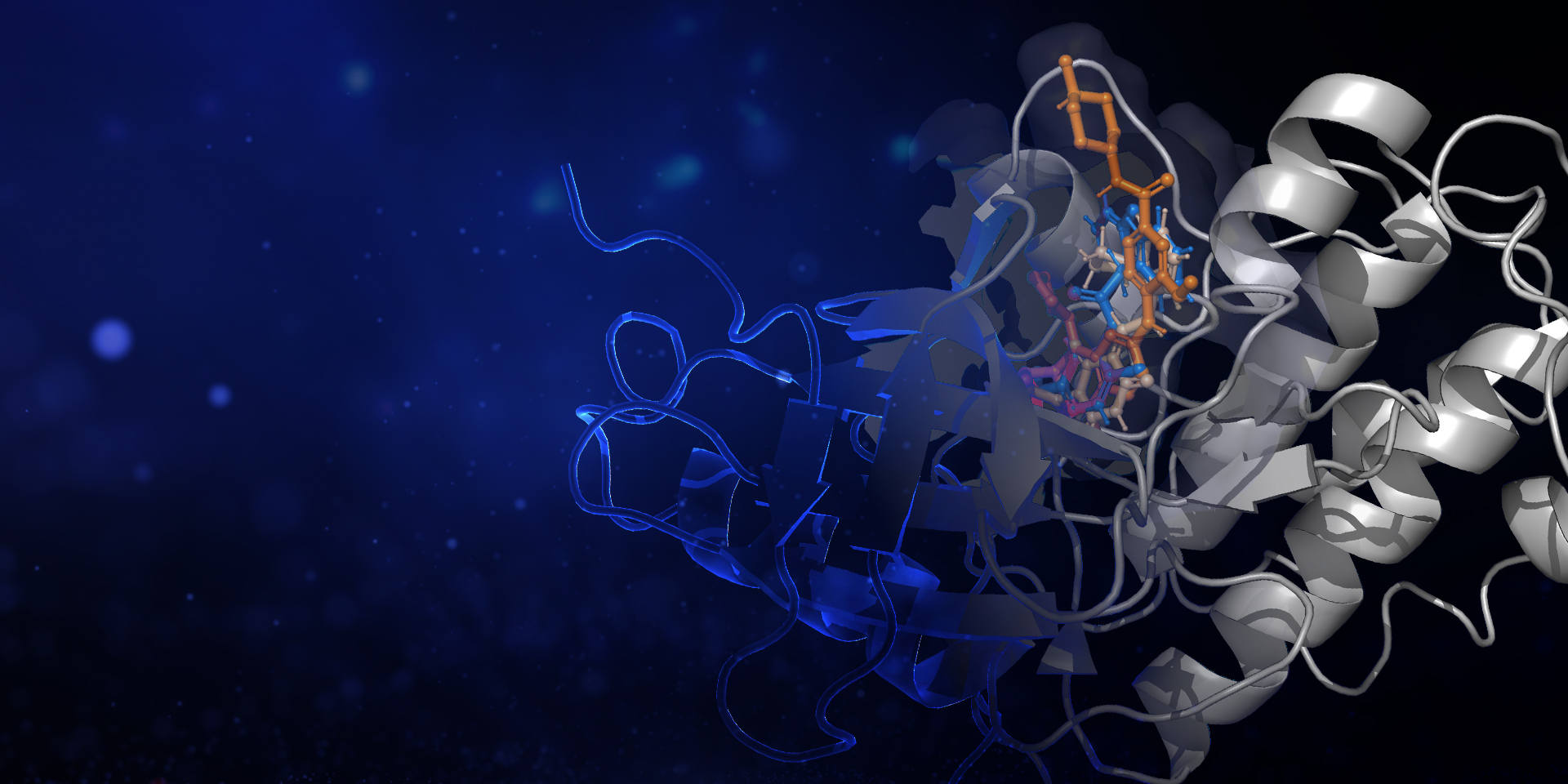High-throughput virtual screening for hit finding & evaluation
Computational target analysis, as well as best practices for both structure-based and ligand-based virtual screening of large ligand libraries

Computational target analysis, as well as best practices for both structure-based and ligand-based virtual screening of large ligand libraries
With the substantial expansion of both virtual and physical ligand libraries, there is growing interest in using computational methods to identify hits by rapidly assessing ligands for protein targets of interest. Schrödinger’s online course, High-Throughput Virtual Screening for Hit Finding and Evaluation, will teach best practices for virtual screening of large ligand libraries.
This course is ideal for those who wish to develop professionally and expand their CV by earning certification and a badge.
This course comes with access to a web-based version of Schrödinger software with the necessary licenses and compute resources for the course:

Methodologies behind ligand docking, pharmacophore-based screening, shape-based screening, and active learning-based workflows
Assess the quality of your target and it’s amenability to be used for structure-based drug discovery workflows
Set-up, run, evaluate, and post-process large scale structure-based and ligand-based virtual screens
Apply your skills by virtually screening a 2 million compound library and complete a case study to identify novel AmpC inhibitors
Introduction and scene setting
Expectations surrounding academic integrity
Introduction to high-throughput screening and this online course
Virtual screening concepts and theory
Structure-based, ligand-based, and active learning approaches
Target preparation and validation
Target validation workflow overview
Preparing and validating a target
Library preparation and pre-screening tasks
LigPrep and docking grid generation
Virtual screening validation and execution
Docking validation results and conclusions
Post-screening analysis
Hit analysis next steps
AmpC case study
Check your understanding before moving on
Absolute binding FEP+ findings and observations
Pricing varies by each course and by the participant type. For students wishing to take these courses, we offer a student price of $140 for introductory courses, $290 for the Materials Science bundle, and $825 for advanced courses. For commercial participants, the course price is $545 for introductory courses and $1365 for advanced courses and bundles.
The courses run on sessions, which range from 3-6 week periods during which the course and access to software are available to participants. You can find the course session and start dates on each course page.
Once the course session begins, all lectures are asynchronous and you can view the self-paced videos, tutorials, and assignments at your convenience.
Interested participants can pay for the course by completing their registration and using the credit card portal for an instant sign up. Please note that a credit card is required as we do not accept debit cards. Additionally, we can provide a purchase order upon request, please email online-learning@schrodinger.com if you are interested in this option.
Schrödinger is committed to supporting students with limited resources. Schrödinger’s mission is to improve human health and quality of life by transforming the way therapeutics and materials are discovered. Schrödinger proudly supports the next generation of scientists. We have created a scholarship program that is open to full-time students or post-docs to students who can demonstrate financial need, and have a statement of support from the academic advisor. Please complete the application form if you qualify for our scholarship program!
While access to the software will end when the course closes, some of the material within the course (slides, papers, and tutorials) are available for download so that you can refer back to it after the course. Other materials, such as videos, quizzes, and access to the software, will only be available for the duration of the course.
For the duration of the course, you will have access to a web-based version of Maestro, Bioluminate, Materials Science Maestro and/or LiveDesign (depending on the course). You do not have to separately purchase access to any software. While access to the software will end when the course closes, some of the material within the course (slides, papers, and tutorials) are available for download so that you can refer back to it after the course. Other materials, such as videos, quizzes, and access to the software, will only be available for the duration of the course. Please note that Schrödinger software is only to be used for course-related purposes.
What our alumni say